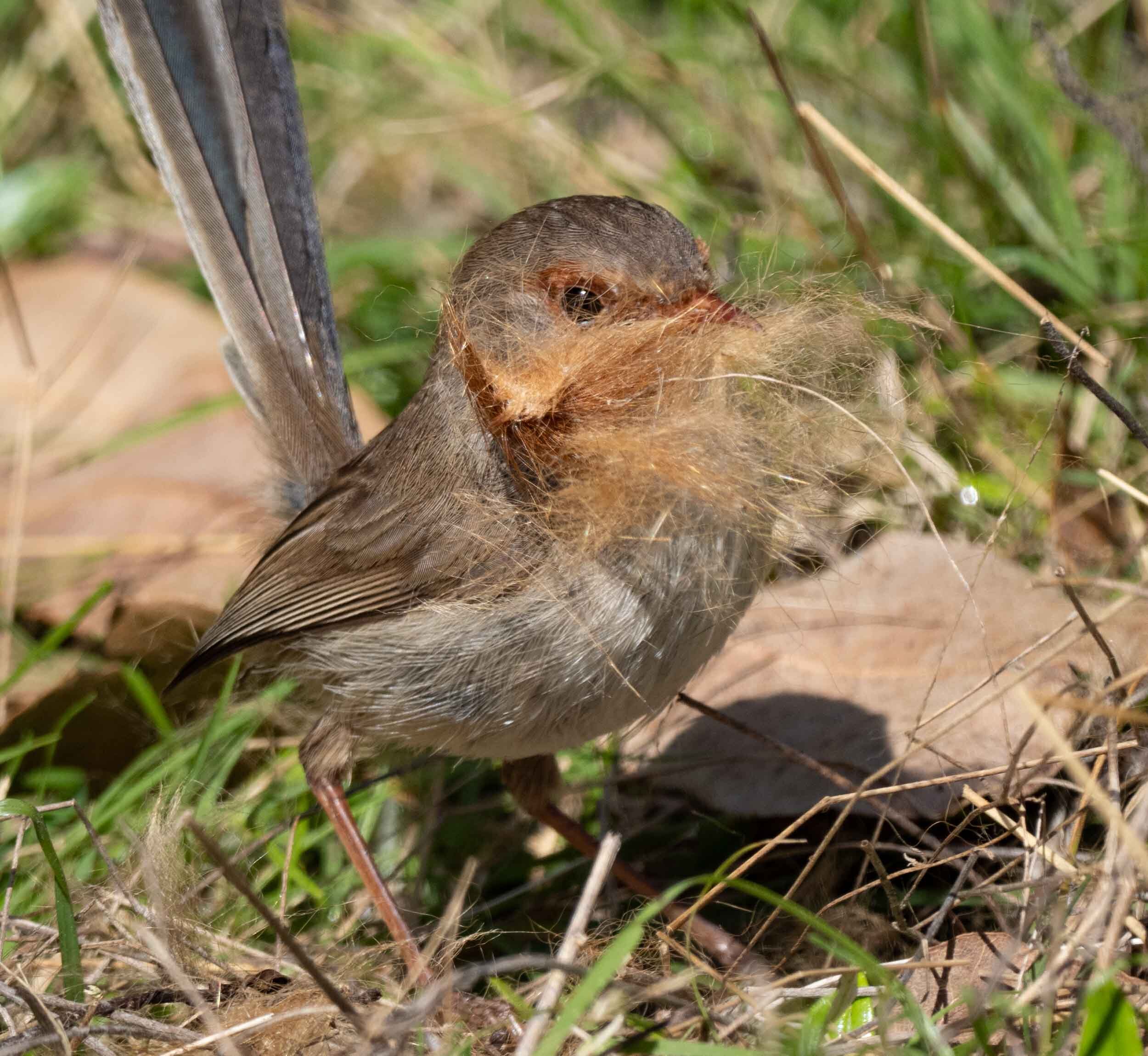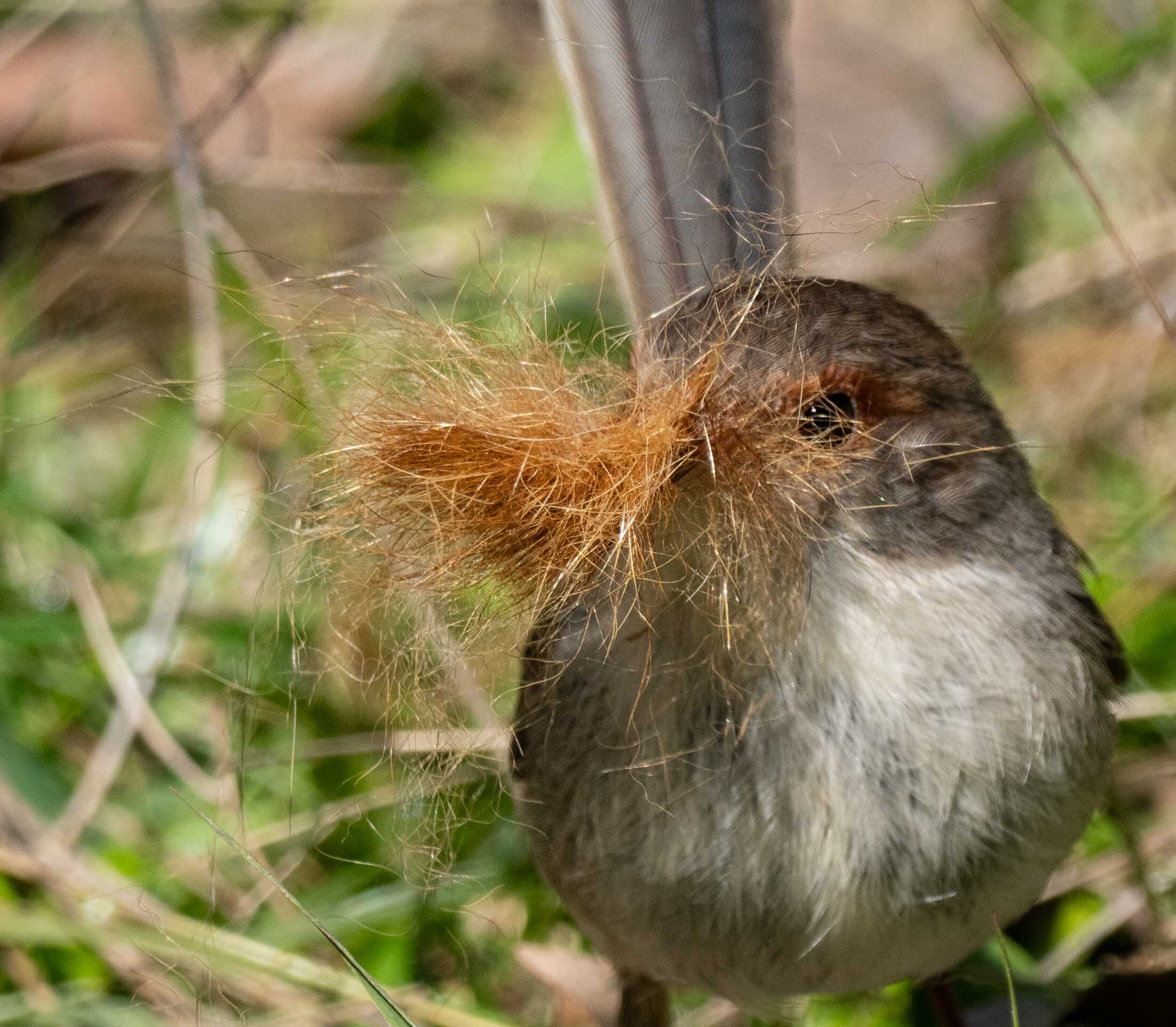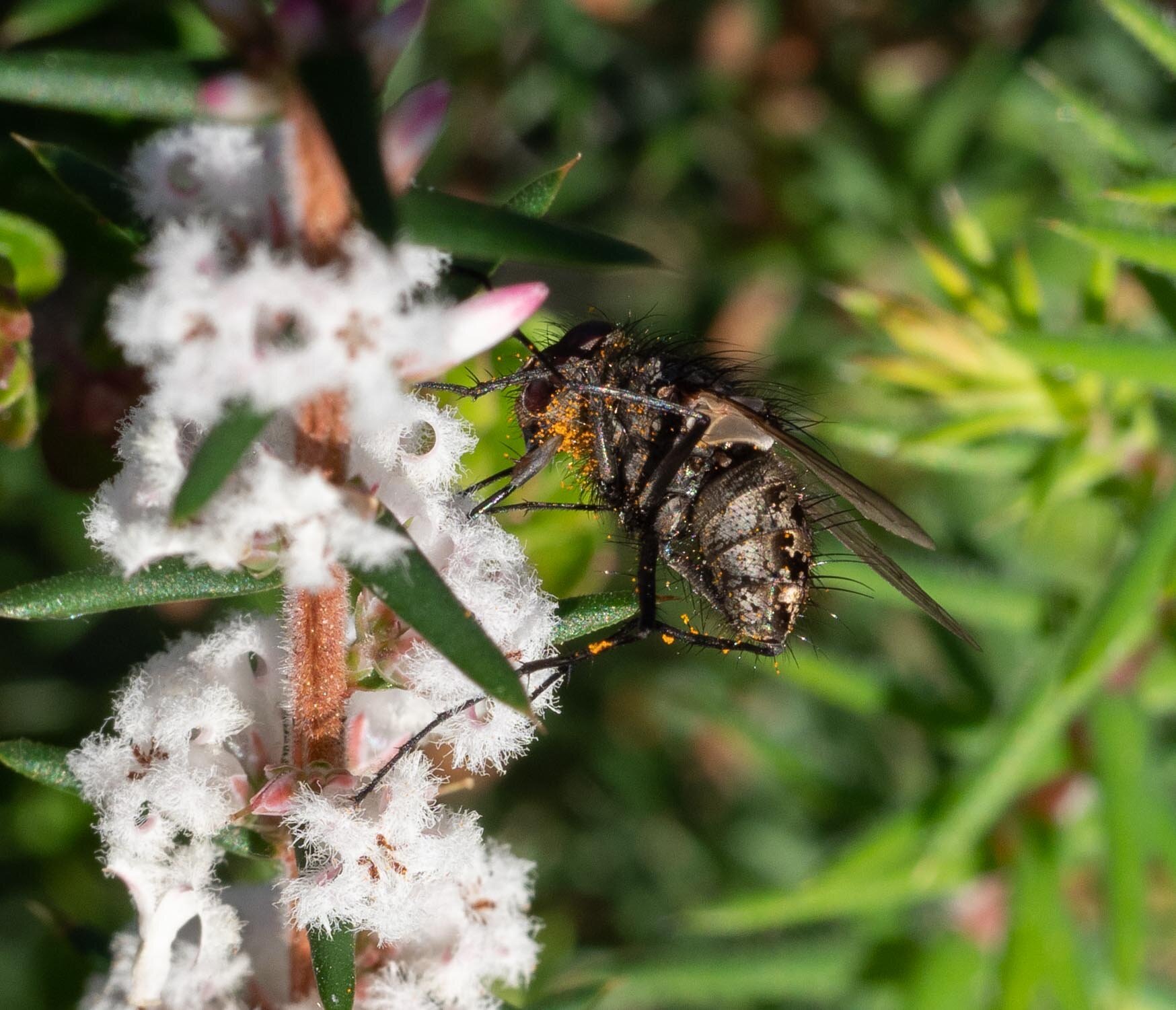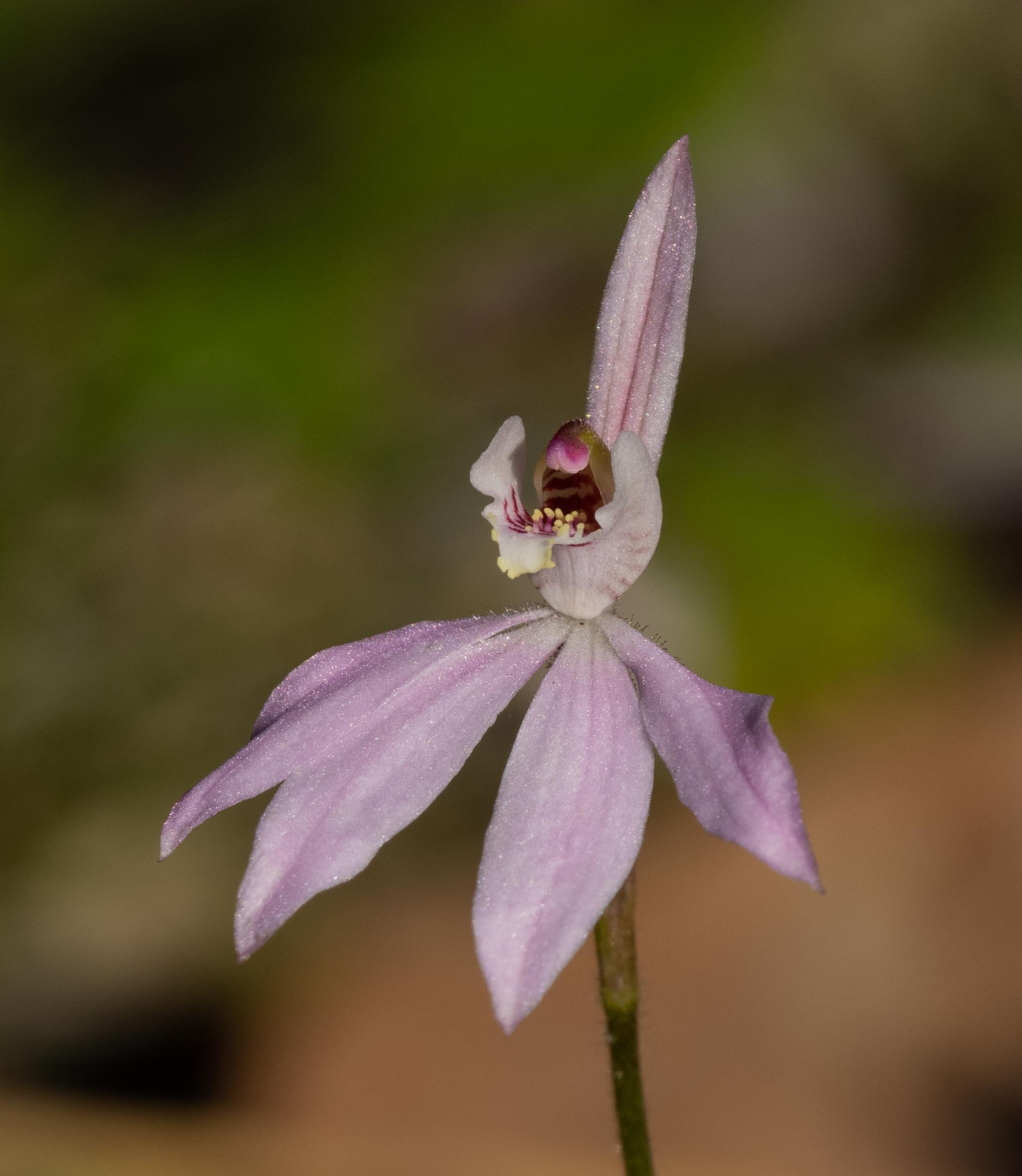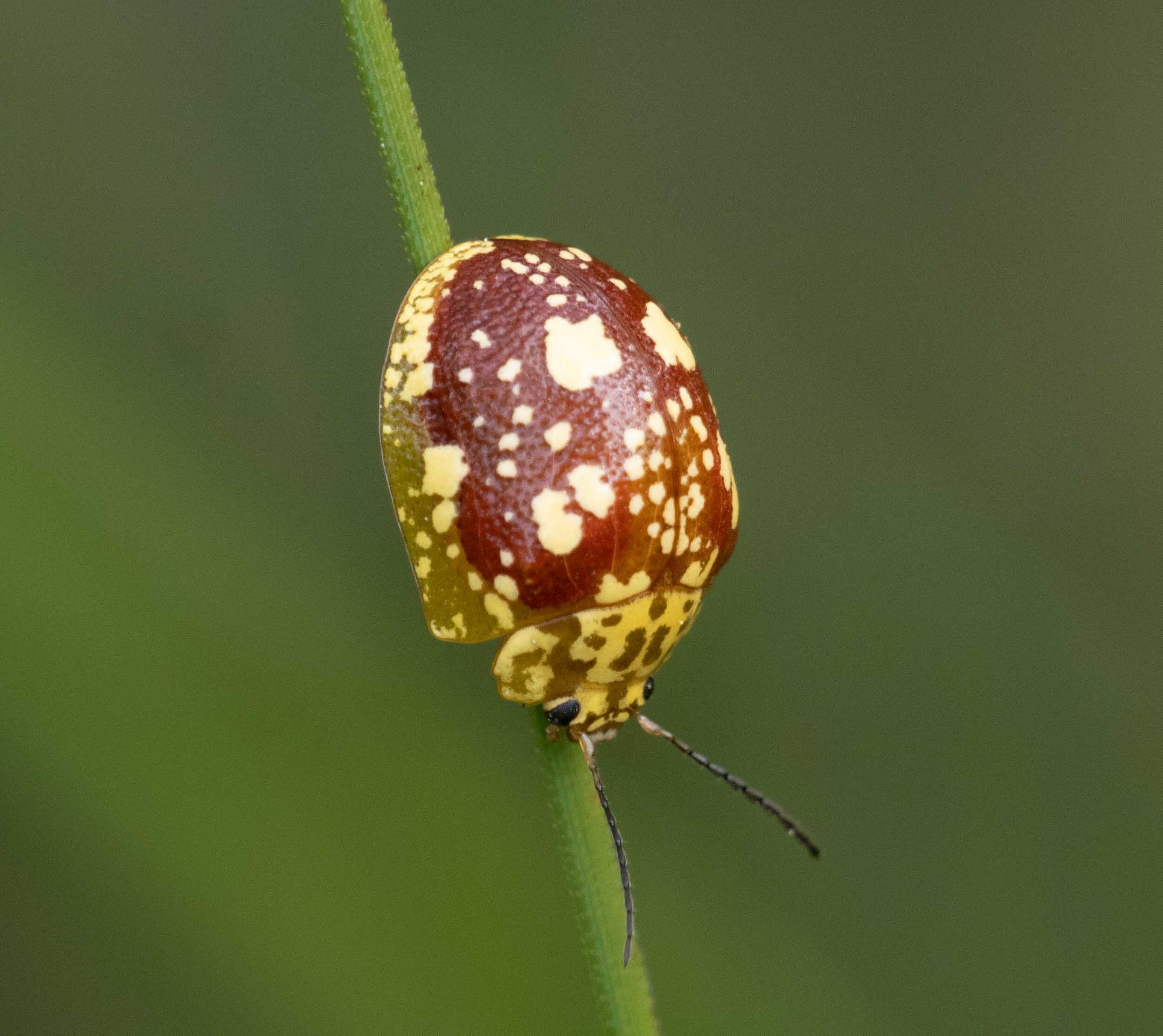Spring action

Luxuriant growth – and at least seven species in flower in this one small patch. There are many, many more across the forest floor.
(Indigofera, Stackhousia, Bossiaea, Pultenaea, Tetratheca, Kennedia, Wahlenbergia). photo taken 13/9/2021
The forest floor is now quite glorious – but the arrival of Spring is more than colourful flowers and warmer days. It’s a time of frenzied activity. Insects swarm, intent on finding mates. Forest birds are building nests and defending territories. Flowers provide food for both, achieving pollination in the process. And predators take full advantage to grab an easy meal.
Everywhere you look, there are stories to tell. Here is a little of the forest drama of recent days. Simply short stories, a few videos, and a quick summary of new sightings.
Of feathers and fur
Superb Fairy-wren
According to the bird books, fairy-wrens line their nests with feathers and fine grass. But soft, silky fur seems an even better option. This female was clearly excited by her find. She returned repeatedly, gathering beak loads of shiny brown fluff.
It was definitely fur and I can guess where it came from. One of our resident kangaroos frequents that patch, and I suspect she’s now shedding her winter coat.
Mating en masse
Insect mating swarms are often short-lived and fast-moving, but always worth investigating.
Tiny Reed Bees
One sunny morning I spotted dozens of tiny insects swarming above the white Pimelea flowers. Occasionally they would land and their identity and intent became clear. Reed bees (Exoneura), and more interested in breeding than feeding.
Swarming Scarab Beetles
Another Pimelea flower head, another mating swarm – this one a gathering of little scarab beetles. Their clumsy flight and mating contests are really quite comical.
Frenzied Scavenger Flies
It’s not just flowers that attract insect swarms. Poo does too. Scavenger flies are among the many insects to find fresh wombat and wallaby dung irresistible. Males posture and display in a bizarre, wing-flicking frenzy. These ant-like flies have been extensively studied as a model for the evolution of sexual differences, both in morphology and behaviour. Their taxonomy too has been well-documented … and it seems that these ones may be a new (i.e. undescribed) species. Paul is going to follow up on their ID, and perhaps lodge specimens with the Australian museum.
A mysterious bee
I managed just a quick glimpse of this little golden bee in flight, before she dropped to the ground and into a hole. This is one of the few occasions I’ve actually found the burrow of a native bee. They are much more easily spotted when feeding at flowers. Back at the nest it’s all about concealment and discrete guard duty. Despite waiting patiently and quietly, I’ve yet to see her emerge. Her identity remains a mystery. For now.
Predators attack
Tree-trunk spider with flying ants
Yet another insect swarm, but this one with added drama. Tiny winged ants (or perhaps wasps, I’m not sure) were converging on a burnt tree trunk. As I tried to get a close look at the fast-flying insects, a spider dashed in and stole the show. Superbly camouflaged and normally immobile, two-tailed spiders (Hersiliidae) are usually hard to spot. But this one was so excited by the arrival of food in large numbers, that it had given up any pretence of concealment. It darted from catch to catch, wrapping each insect in silk before diving off in pursuit of another. Ambush hunters often have a long wait between meals. It was this spider’s lucky day.
Common House Spider with fiesty Flower Wasp
In contrast, a lone wasp is enough to keep this spider occupied. House spiders, genus Badumna, are common around the outside of buildings. Their characteristically tangled webs of woolly silk are effective but messy, with none of the visual appeal of an orb-weaver’s construction. The spider spends most of the day hidden away, but the arrival of this flower wasp drew her out into the open. She was so engrossed in her battle that she completely ignored Paul hovering above the action.
The spider was clearly trying to avoid the jaws and stinger of the writhing male flower wasp. Watch to see the wasp’s attempts to ‘sting’ his attacker … her reaction and strategy is impressive.
The spider eventually won, but she was in less danger than it seemed. The wasp is a male and so the spike on the abdomen is not a true stinger. It is unlikely to damage the spider … unless it could puncture her abdomen … and it certainly lacks venom. But it does look rather menacing and seems to have the spider fooled.
Brown Goshawk and her gruesome feast
Again a nesting pair of Brown Goshawks have taken over part of the forest. Usually solitary hunters, they only team up in breeding time. Their high-pitched contact calls must alarm smaller forest birds such as fairy-wrens and honeyeaters, and they are certainly a threat. Indeed, they are already having an impact. I don’t recognise the striped feathers of this unfortunate bird but whatever it was, the female was in no mood to share with her persistently attentive mate.
Sticky pollen grains
Flower-feeding is messy. Some insects are seeking nectar, some pollen, some both. But whatever their intention, if the insect is hairy it will take away more than it bargained for.
Some after dinner cleaning up will be needed. Antennae, wings, mouthparts, and eyes don’t function well under a load of pollen. Even pollen-gathering bees spend time rearranging their loads. Paul watched this March fly busily removing the bright orange pollen grains of Pimelea.
More flowers, more insects
This is the time of year when the forest is at its most colourful. Photos really don’t do it justice.
Of course, this is not a typical year. We are witnessing the combined effects of good rains throughout 2020-2021, and greatly reduced competition and shading caused by the fire of Summer 2020. This is no ordinary Spring in the forest, and regeneration of the ecosystem is still in its early stages. Yet it is certainly beautiful.
While some flowers are abundant and showy, many are sparsely scattered and some are quite cryptic. So today, just for fun, we surveyed the plant species currently in flower. We counted 64! Even we were surprised. (here’s the full list, for the more botanically inclined).
Some are at their peak, such as Stackhousia, Solanum and Pultenaea. Others are just starting to appear (eg Aotus, Platysace) or nearing the end of their run (eg Indigofera, several wattle species).
Recent additions
Whenever we venture out along the forest trails we encounter something new. The blooms and animals below each made their seasonal debut this month.
Note: for more information on each image (eg scientific names, links to iNaturalist record), click to enlarge and then either scroll over (computer) or click dot in lower right (iOS) to display text.


